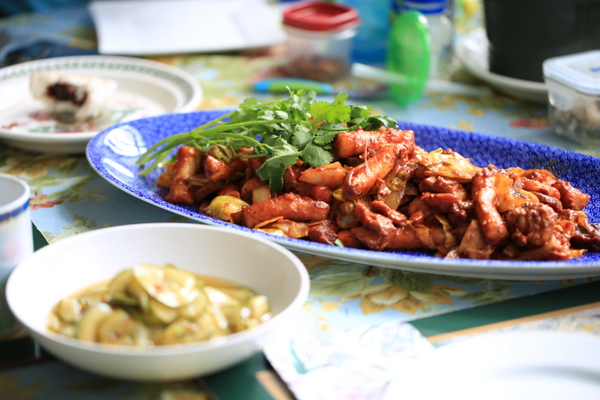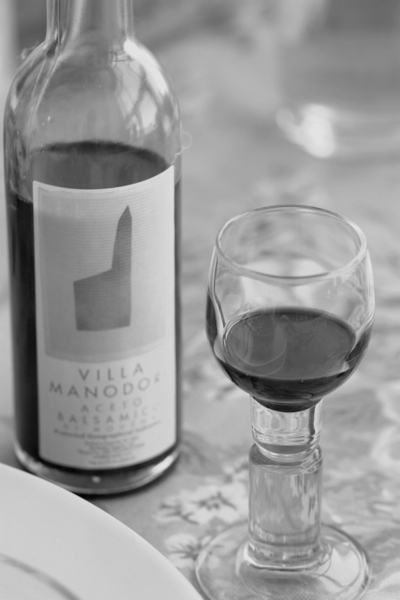
Takoyaki (Japanese for "fried octopus ball," made of wheat flour batter and diced octopus, pickled ginger etc. and special sauce) is the quintessential street food in Japan. It is also very popular in Korea. Takoyaki is a simple, yummy snack or meal that is loved by men and women, young and old, somewhat like French fries or pizza in the US.
When my husband's old friend from Japan, Tetsuro, visited us in early April, we went to a local Japanese grocery store and bought the ingredients for takoyaki and the special takoyaki pan upon Tetsuro's recommendation. The takoyaki pan is essential, as the small concave half-spherical molds in the iron pan give the takoyaki look. I chose the ready-to-use takoyaki batter mix as I am a novice. Tetsuro advised that one could simply use regular wheat flour with salt, pepper, and bits of seafood in the absence of proper taokoyaki mix. In fact, I found the takoyaki mix very salty, something to keep in mind for next time.

Ingredients: Takoyaki mix 110 grams; water 200 ml; eggs 50 grams; blanched octopus 50 grams; green cabbage 40 grams; spring onion 30 grams; cooking oil 15 grams; katsuobushi [dried fermented smoked tuna flakes] 5 grams; takoyaki sauce 45 grams, mayonnaise 45 grams.
1. Mix one whipped egg into water and add takoyaki mix. Stir well.
2. Dice the cabbage, spring onion, and the blanched octopus.
3. Preheat the takoyaki pan on stove-top and coat it with cooking oil. Add egg/water/takoyaki mix to half-point of each mold in the pan. Add the diced cabbage, spring opnion, and octopus.
4. Add the remaining batter mix to fill each mold to the top and cook on medium heat.
5. As the batter puffs up and spills over, roll each takoyaki gently left and right in the mold so that it does not stick to the base of the mold.
6. When the takoyaki turns brown (about 10 min), it is ready to be served. Remove the takoyaki from the pan and transfer them on to a plate; sprinkle generously the katsuobushi and pour the takoyaki sauce over the takoyaki and serve.
Ddeok Bokki (spicy Korean rice cake)
In Korea, ddeok bokki, stir-fried rice cake with spicy chili sauce, is the quintessential street food. One can find street vendors selling this favorite snack in busy intersections and city streets, campus towns, crowded open markets, as well as sleepy towns.
My friends Boyeon and Giyeon made this fiery version with chicken. The hot chili sauce burned my tongue delightfully. It was deliciously painful to eat, and utterly addictive.
















